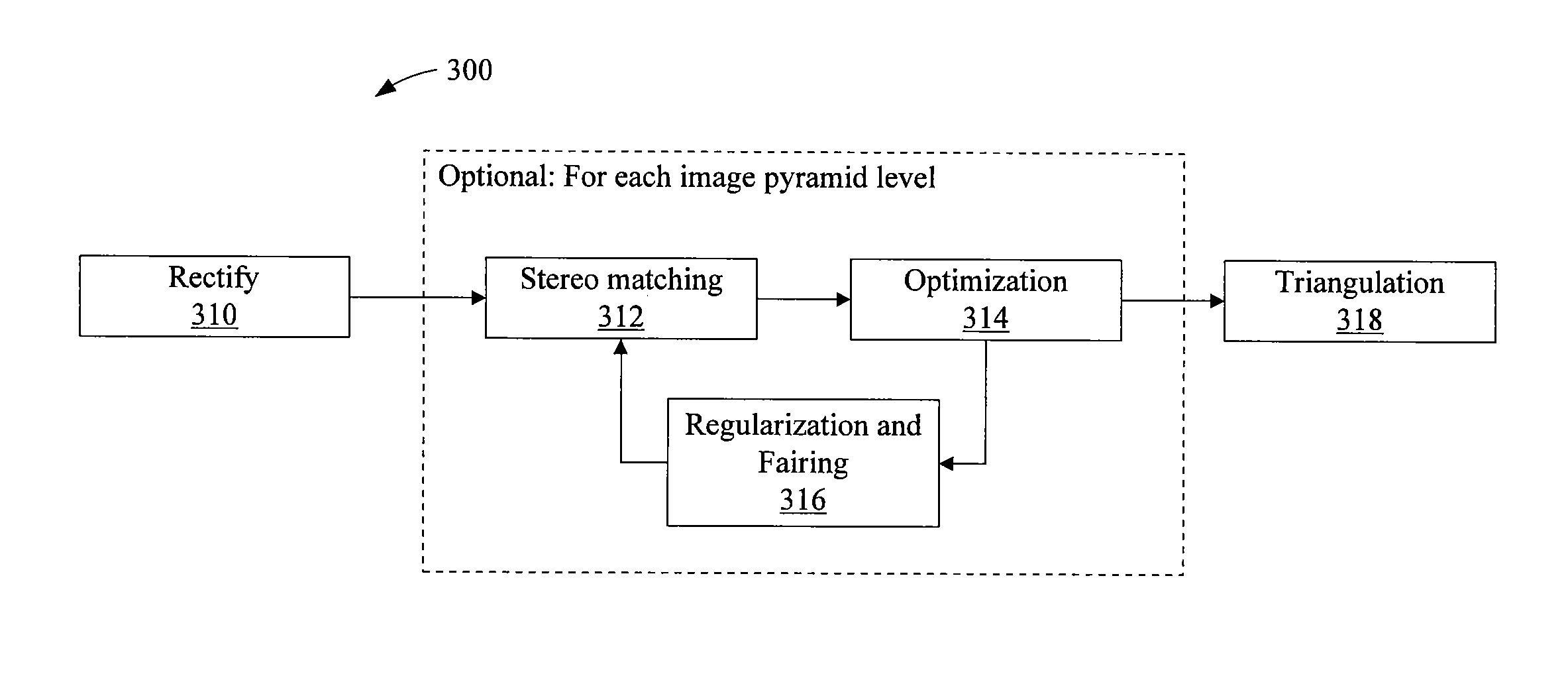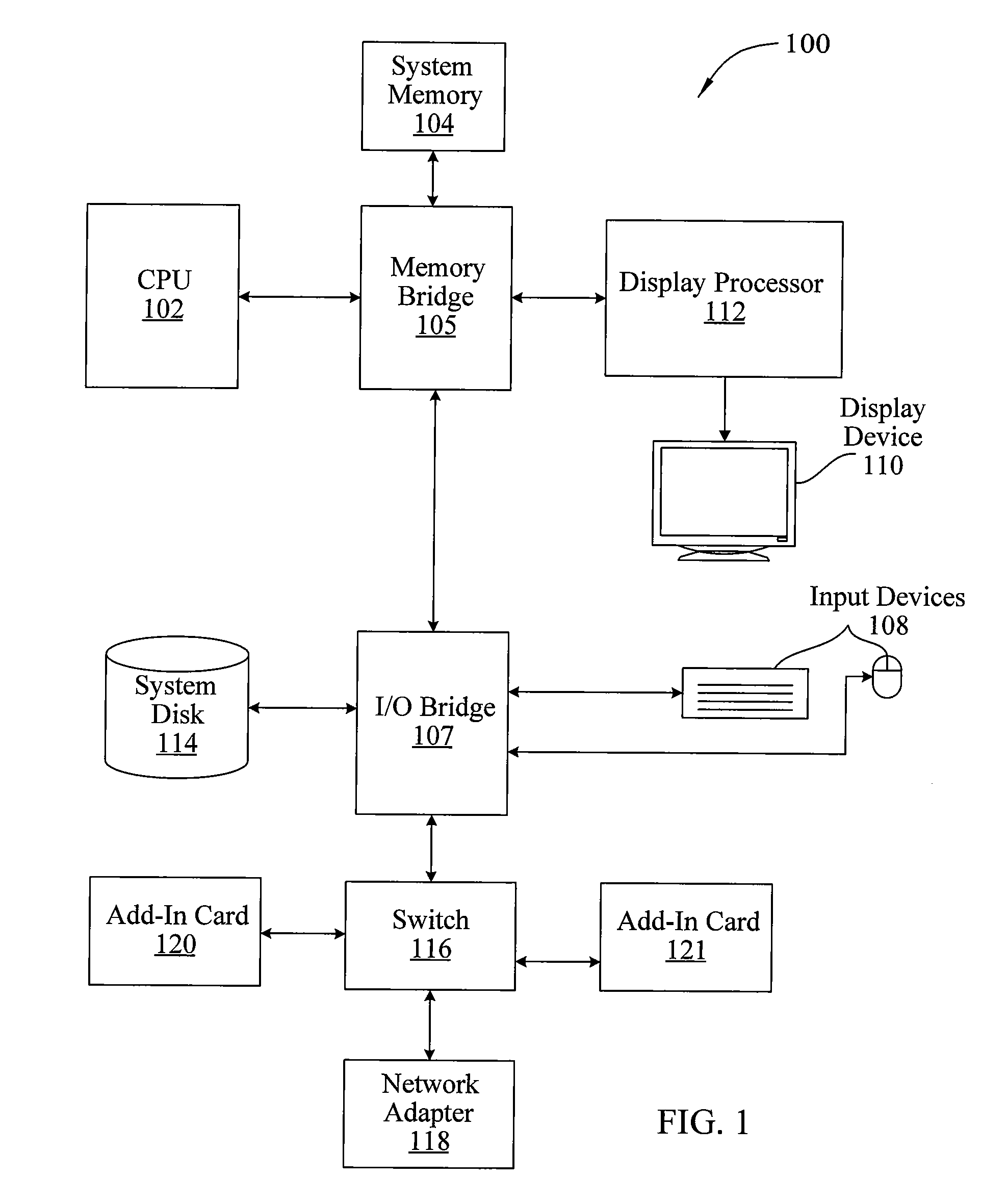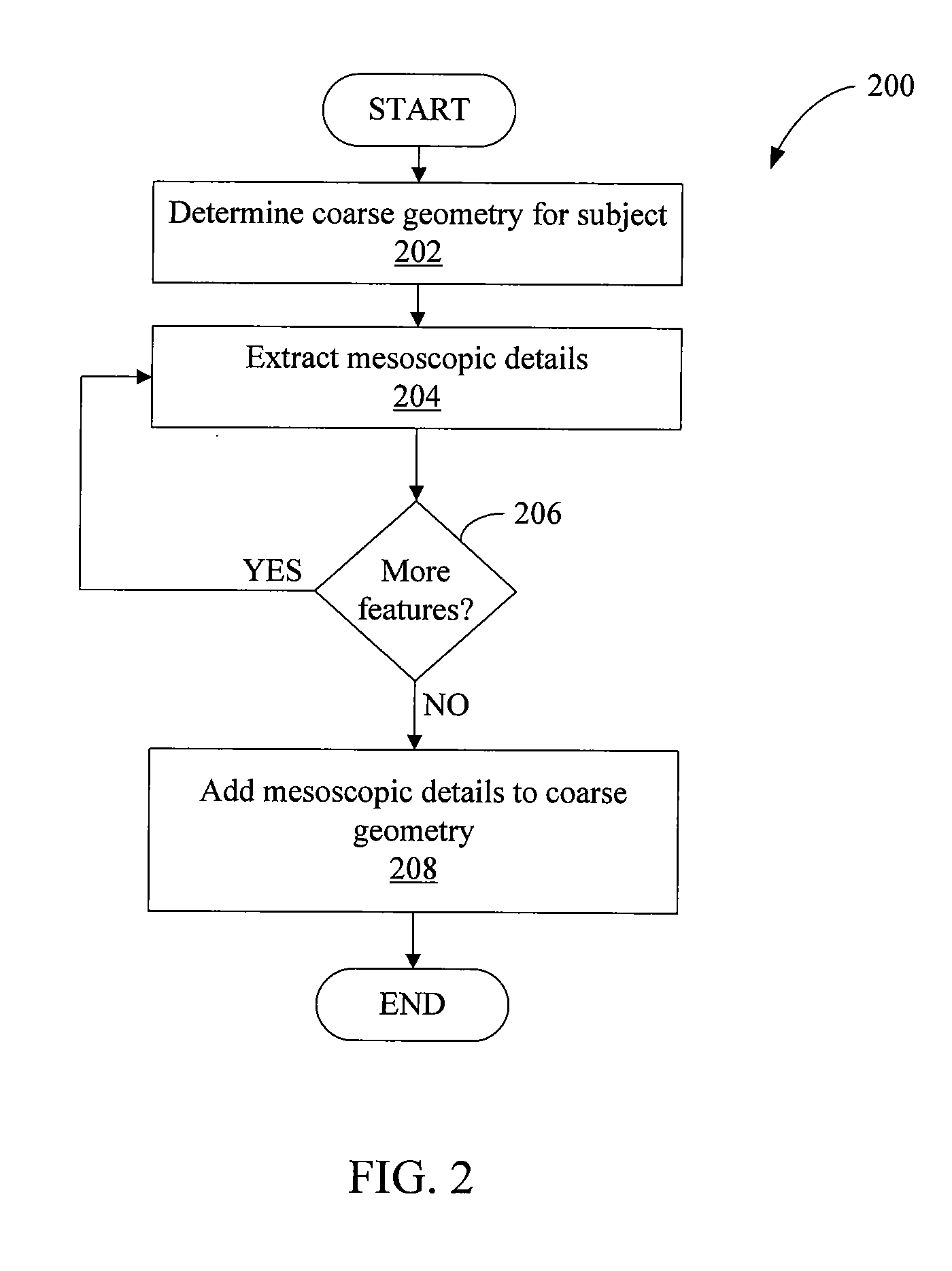System and method for calculating an optimization for a facial reconstruction based on photometric and surface consistency
a surface consistency and optimization technology, applied in the field of computer graphics and computer vision, can solve the problems of insufficient facial reconstruction, wrinkle formation, and difficult and tedious creation of conventional methods, and achieve the effect of less cos
- Summary
- Abstract
- Description
- Claims
- Application Information
AI Technical Summary
Benefits of technology
Problems solved by technology
Method used
Image
Examples
Embodiment Construction
[0025]Embodiments of the invention provide a technique that adds mesoscopic detail to low-frequency geometry recovered by a reconstruction technique such as stereoscopic reconstruction. In certain embodiments, mesoscopic skin details are present within certain bands in the spatial frequency domain. Embodiments of the invention apply one or more bandpass filters to extract one or more different types of details from the subject. The features are then used to modulate the low-frequency geometry.
[0026]One embodiment of the invention provides a computer-implemented method for generating a three-dimensional model of an object. The method includes generating a coarse geometry mesh of the object using a reconstruction method such as stereo reconstruction; optimizing the coarse geometry mesh based on photometric consistency and surface consistency associated with the coarse geometry mesh; determining a first set of mesoscopic details associated with the object by applying a filter to an ima...
PUM
 Login to View More
Login to View More Abstract
Description
Claims
Application Information
 Login to View More
Login to View More - R&D
- Intellectual Property
- Life Sciences
- Materials
- Tech Scout
- Unparalleled Data Quality
- Higher Quality Content
- 60% Fewer Hallucinations
Browse by: Latest US Patents, China's latest patents, Technical Efficacy Thesaurus, Application Domain, Technology Topic, Popular Technical Reports.
© 2025 PatSnap. All rights reserved.Legal|Privacy policy|Modern Slavery Act Transparency Statement|Sitemap|About US| Contact US: help@patsnap.com



